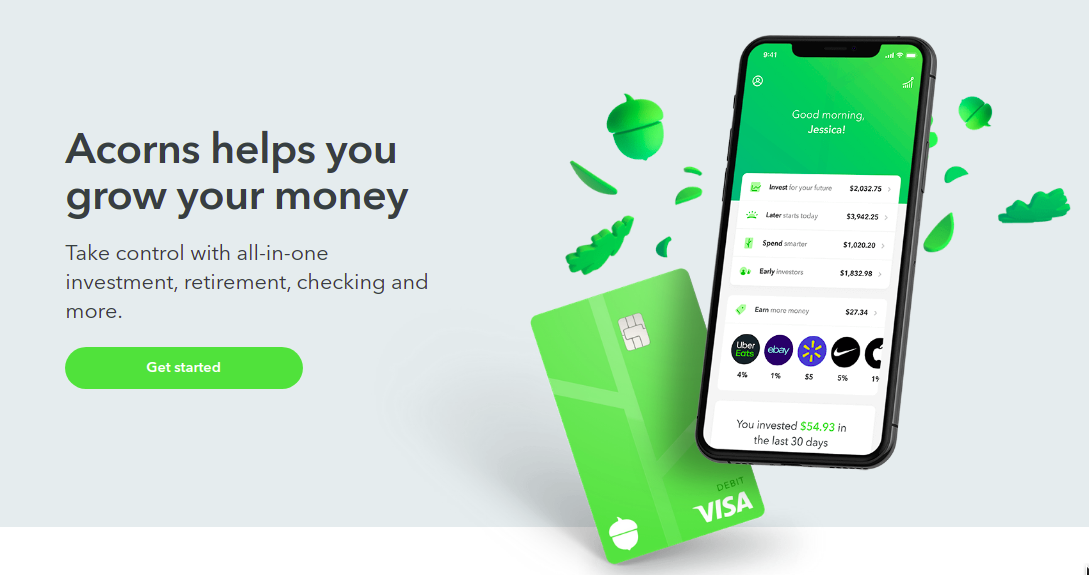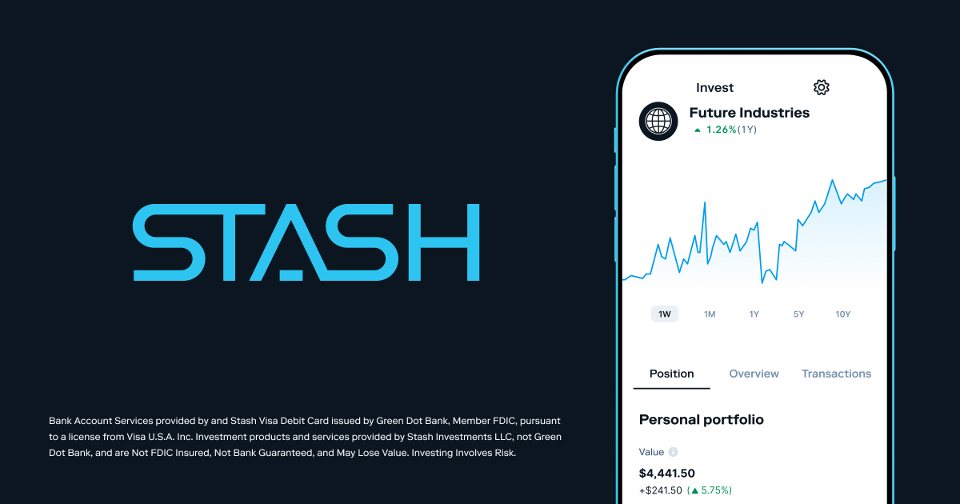Acorns vs Stash

- $5 to start investing
- No commissions
- ETFs in seven asset classes
- $5 to start investing
- Useful guidance for new investors
- 60 ETFs and 150 individual stocks
Investing is critical for achieving your long-term financial goals. Smart investing may seem complicated and risky, so it’s not uncommon for people to stash their cash in a bank account.
To make things easier for the new retail investor, there are options. In this review, we are going to take a look at Acorns vs. Stash.
Both Acorns and Stash offer a low barrier to investing, with low account minimums and low fees. These platforms are a mixture of robo-advisor, application, and automated saving. If you don’t have the time or the expertise to manage your investments, these platforms could prove useful.
Let’s take a look at the features offered by both and which investing platform is the right option for you.
Acorns Overview: For the Micro-Investor
Acorns users link their bank accounts to everyday purchases on a selected credit or debit card. Each purchase is rounded up to the nearest dollar amount and the difference is invested. This is what’s known as micro-investing.
Only 55% of Americans own stock, according to Gallup. Thus, if you are one of them, anything you can do to start investing is a move in the right direction. And Acorns is good for just that.
Acorns Details
| Monthly Fees | Monthly Fees – $1, $3, or $5 |
|---|---|
| Minimum Account Balance | $0 |
| Account Types | IRA & Brokerage |
| Investment Type | Exchange-Traded Funds (ETFs) |
Acorns likes to keep things simple, so you won’t find the same advanced features as you’re likely to find on Betterment, Wealthfront, or SoFi Invest.
Instead, you’re able to automatically invest your money through savings. There’s also a feature called Found Money, which enables you to claim rebates of up to 10% through selected merchants, such as Lyft and AirBnB. It takes around two to four months for these rebates to reach your account.
Users choose their investments based on their preferences. When you open an account, you’ll be asked to choose your time frame, tolerance for risk, and financial goals. You may choose from five different portfolios.
Acorns Fees
The cost is $1 a month for the standard taxable investment account, $3 per month for Acorns Later, their IRA account, and Acorns Spend, which is a bank account and debit card offering. For $5 per month, you gain access to Acorns Early, a custodial account for children.
Acorns Pros
- Invest automatically
- Simple and easy to use
- No account minimums
Acorns Cons
- No tax-loss harvesting
- Limited investment options
- Tough to save enough with round-ups alone
Stash Overview: For the Investor Who Wants More Choice
The two apps are extremely similar, and their base features are the same. Where Stash differs is better portfolio management and more options to invest in.
Stash Details
| Monthly Fees | Monthly Fees – $1, $3, or $9 |
|---|---|
| Minimum Account Balance | $0 |
| Account Types | Traditional IRA, Roth IRA, and Brokerage |
| Investment Type | ETFs and Individual Stocks |
Stash Features
Stash offers the same automated saving feature as Acorns. All purchases from a linked credit or debit card are rounded up to the nearest dollar and invested in your portfolio.
What’s different is the Stock-Back program. Make a purchase on a Stash debit card and you’ll be rewarded with fractional shares in an ETF or stock.
You can also analyze your bank account’s spending in an attempt to boost your savings through the SmartStash scheme.
The platform also has a selection of articles, blog posts, and FAQs to improve your financial literacy.
Stash Fees
The fees are $1 per month for a brokerage account, $3 a month for the traditional and Roth IRA accounts, and $9 per month for custodial accounts and double yields from the Stock-Back program.
Stash Pros
- Invest automatically
- Strong range of investments
- Plenty of educational content
- Higher investment fees
- Savings not significant enough
- No tax-loss harvesting or rebalancing
Acorns vs. Stash: What’s the Best Platform for You?
On the face of it, there’s little difference between Acorns and Stash. They offer the same base features.
When it comes to choice, Stash offers a more diverse range of stocks and ETFs to invest in. However, Acorns may be a better choice for those who want to completely automate their portfolio because it has automatic rebalancing. Stash doesn’t.
Both platforms are quality products, but the right option depends on whether you prioritize choice over cost.
Ready to get started? Check out Acorns or Stash.






